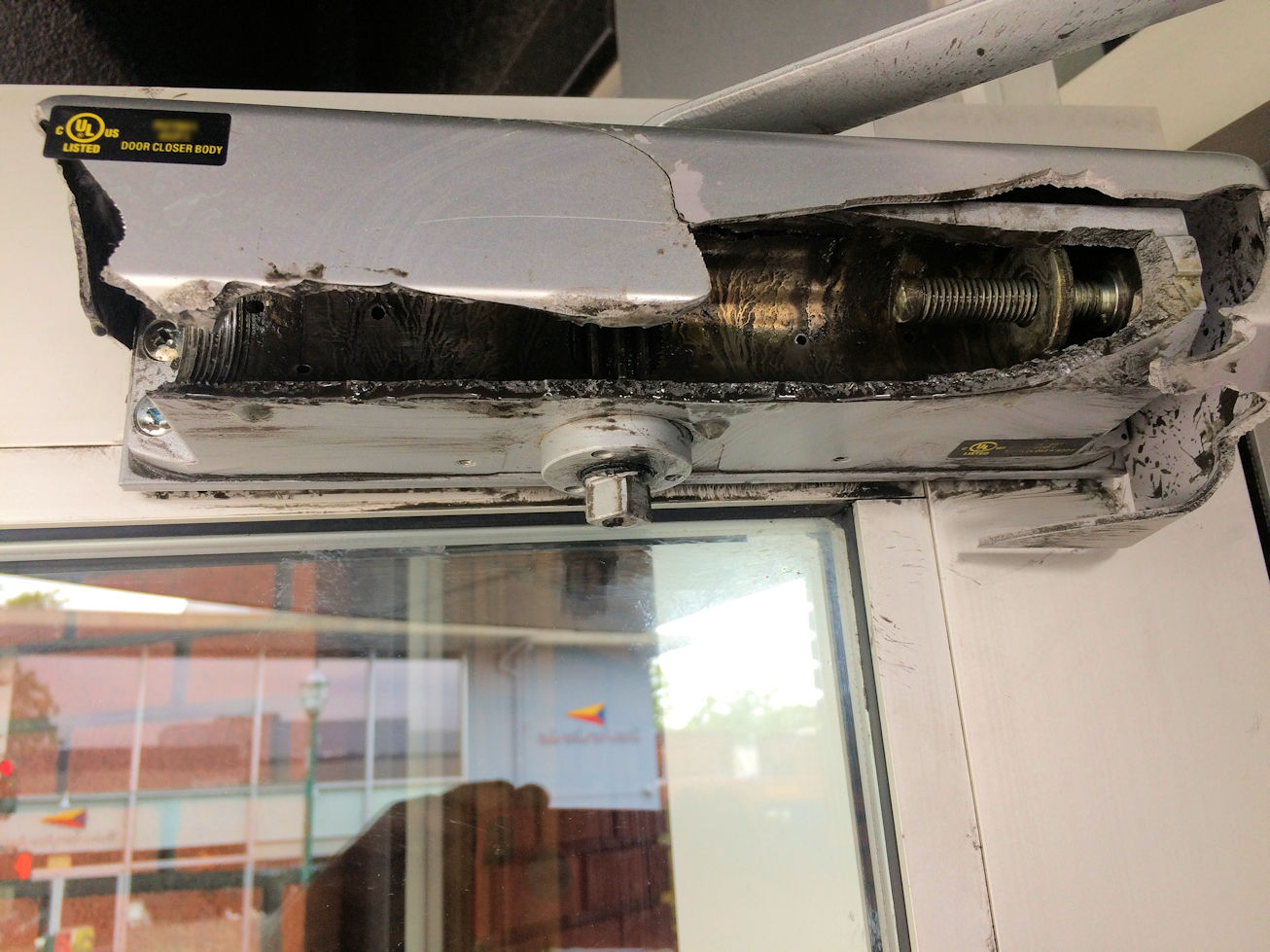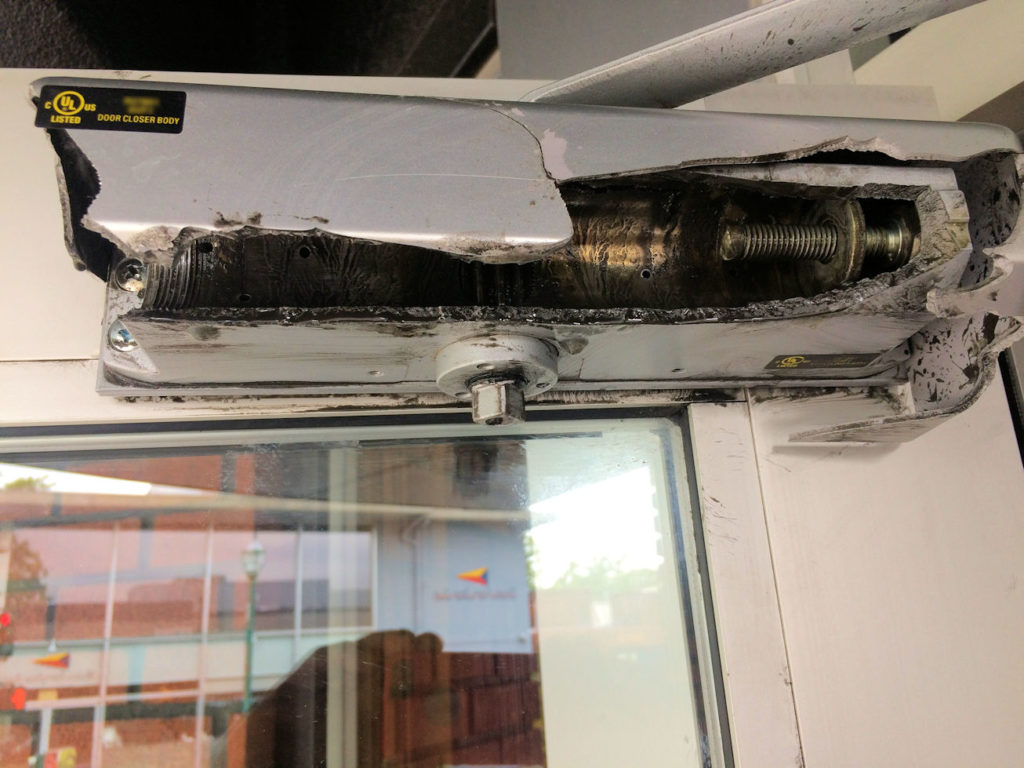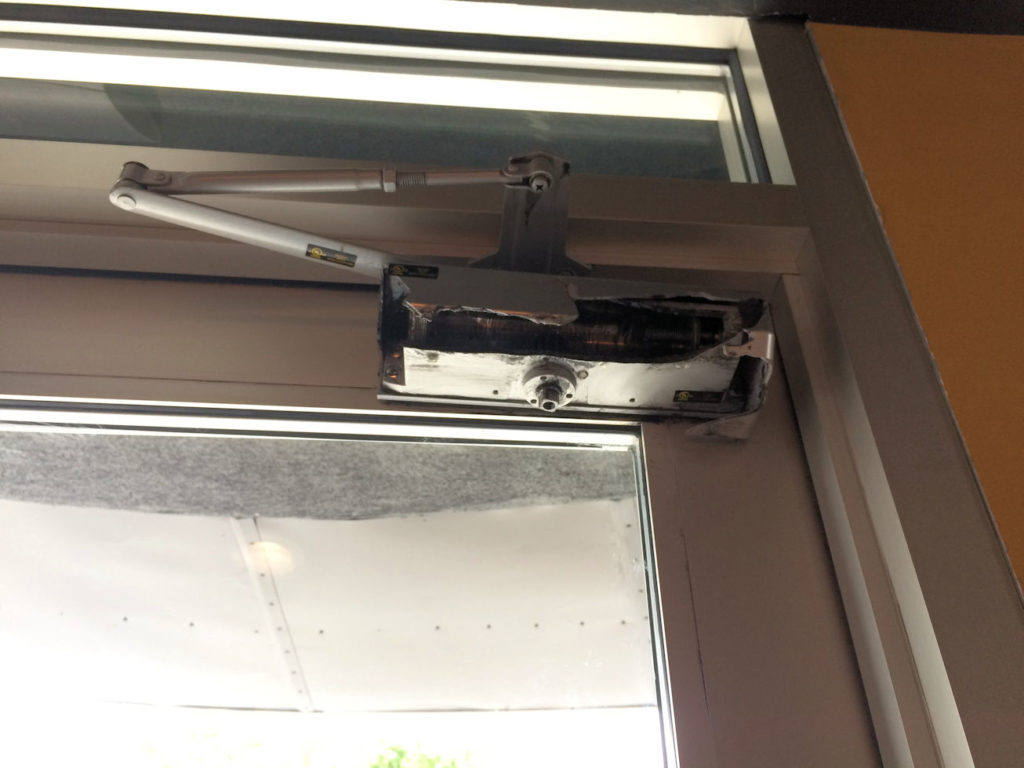The last time I posted a photo of a closer that had exploded, some of the readers thought it was Photoshopped. Well, here is another one from Dave Matas of Opening Technologies, whose customer called to say that the closer had “exploded with parts flying into the street.” Luckily, no one was hurt.
You need to login or register to bookmark/favorite this content.








Lori,
What causes a door closer to explode?
–
Hi Lisa –
That’s a really good question! And since I’m not an engineer I’m going to ask one of them to answer it and I’ll do a follow-up post.
– Lori
Was it an LCN closer?
Hi Brad –
No, it was not.
– Lori
I wondered what the cutaway view looked like, was someone forcing the door?
I’m not sure what happened just prior to the failure.
– Lori
When I first started working in the medical center in the mid-eighties, there were thousands of Russwin 500 series closers. They were notorious for breaking gear teeth off of the spindle which would eventually get caught between the pinion and the rack. The pressure of the rack and pinion trying to push away from each other would literally blow the cast casings apart, just like in this photo. We were lucky that no one ever got hurt, aside fro a few oil-covered doctors and nurses.
Looks like an off shore aluminum cast unit . I have seen a few in my time . I’m surprised the glass in the door survived the shrapnel
How a Closer can explode? it’s Solid Die-cast body.
The body doesn’t explode, what’s inside does.
There is a force being built up inside the closer and when that force exceeds the design strength of one piece, that piece fails, soimetimes explosively. When the force generated exceeds the strength of the housing, you get exactly what you see in the photo.